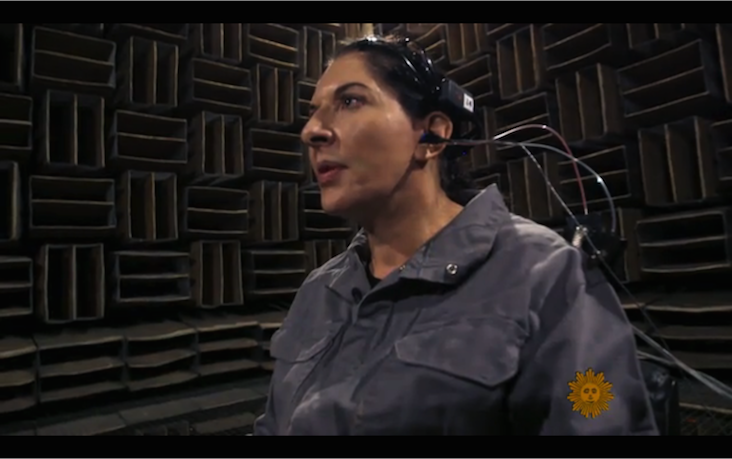I collaborate with artists and scientists to create works that are guided by both scientific and artistic inquiry and that generate output in both fields. What is an artistic intention? How is it possible that the mere presence of an individual can change the mood of an entire theater? What makes us feel connected to some people, but not others?
Artistic collaborators include performance artist Marina Abramovic, computer artist Matthias Oostrik, composer/sound designer Drazen Bosnjak of Q Department, Butoh artist and choreographer Vangeline, among others.
Many of the projects are presented under the umbrella of MAI art+science.
mutual wave projects | intentions | in visible cues | original ideal
intentions
with marina abramovic, drazen bosnjak (q department), simon henin, glenis long
What is an artistic intention? How is it possible that the mere presence of an individual can change the mood of an entire theater? What is left if we strip an artistic sound or gesture from its physical presence?
We set out to investigate these questions with performance artist Marina Abramovic, in the legendary Bell Labs Anechoic Chamber, once the most silent room in the world. Scientists recorded Marina Abramovic's EEG, Otoacoustic Emissions (OAEs), and audio as she was listening to, imagining or producing a series of expressions, including her Artist Manifesto. One novel results from the OAEs suggest that sounds are subject to our imagination and expectations as soon as they reach our ears. We are currently testing more subjects to confirm this effect.
In addition, a record will be produced where the sonification of Abramovic brainwaves as she is listening to herself reading her Artist Manifesto is the soundtrack to her own voice as it reaches and is emitted by her eardrums.
venues: Bell Labs Laboratories, Lucent Technologies 2014. Ongoing
the project was included in a CBS Sunday Morning feature on Marina Abramovic (2:48 - 3:23 in video below)
in visible cues
with matthias oostrik and vangeline
What is the relationship between mind and body during dance? How might neuroscience be able to inform and enrich the experience of both dancers and audience?
Although much can be learned from laboratory studies, they barely scratch the surface when it comes to understanding how the brain governs the full spectrum of dance as a performative art form and its impact on the audience. In In Visible Cues, EEG activity of Butoh dancers and audience members are recorded, analyzed, and translated into visuals, creating a true hybrid form between neuroscientific research and dance performance. more
original ideal
by scott chasserot
What do we find instinctively beautiful in the human face and how does this translate to self-image? What assumptions would we make about another person if we could see their ideal self-image?
Original Ideal combines portrait photography and neuroscience to isolate the subjects' ideal self image, a cerebrally sincere preference obtained by circumventing conscious thought. more



